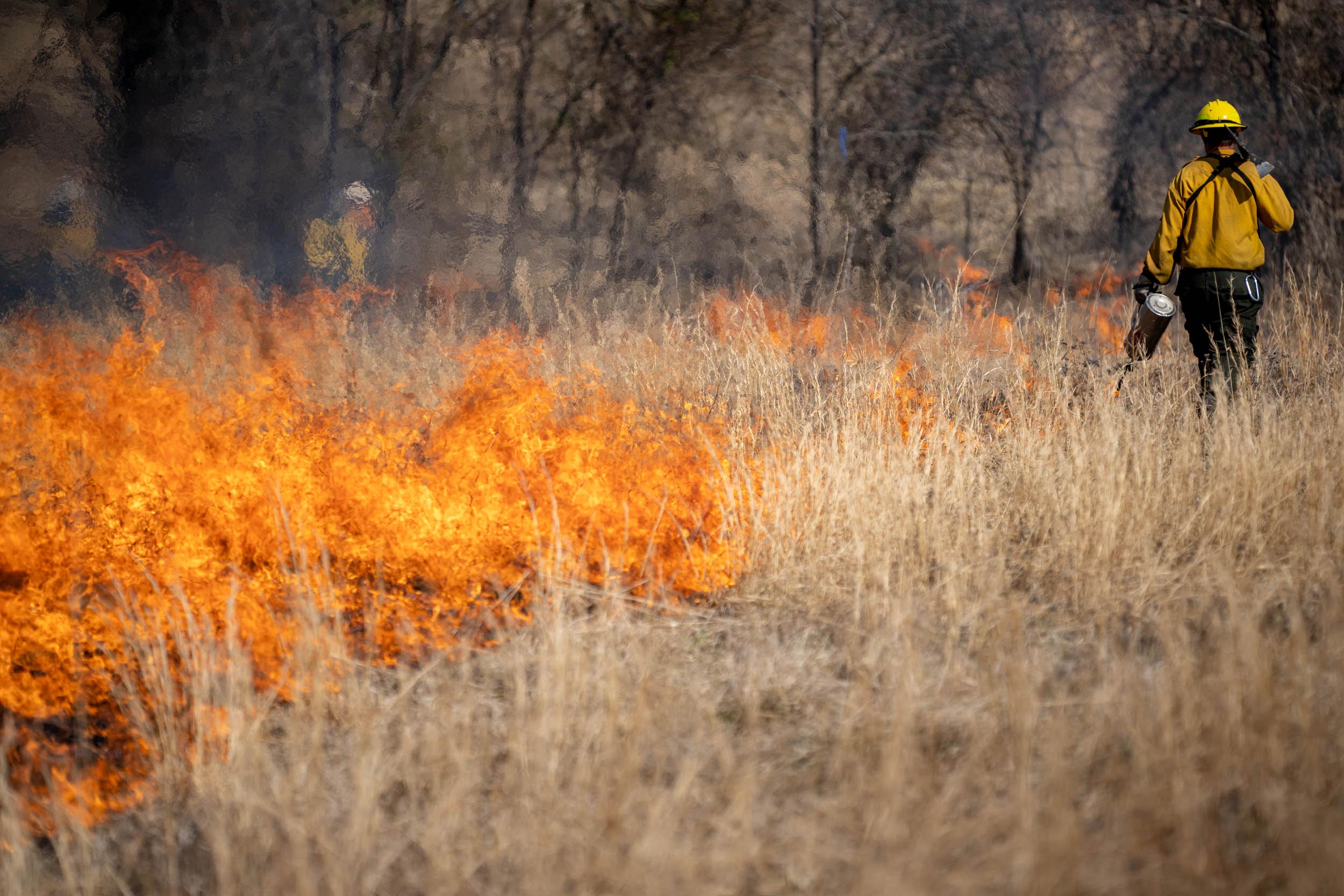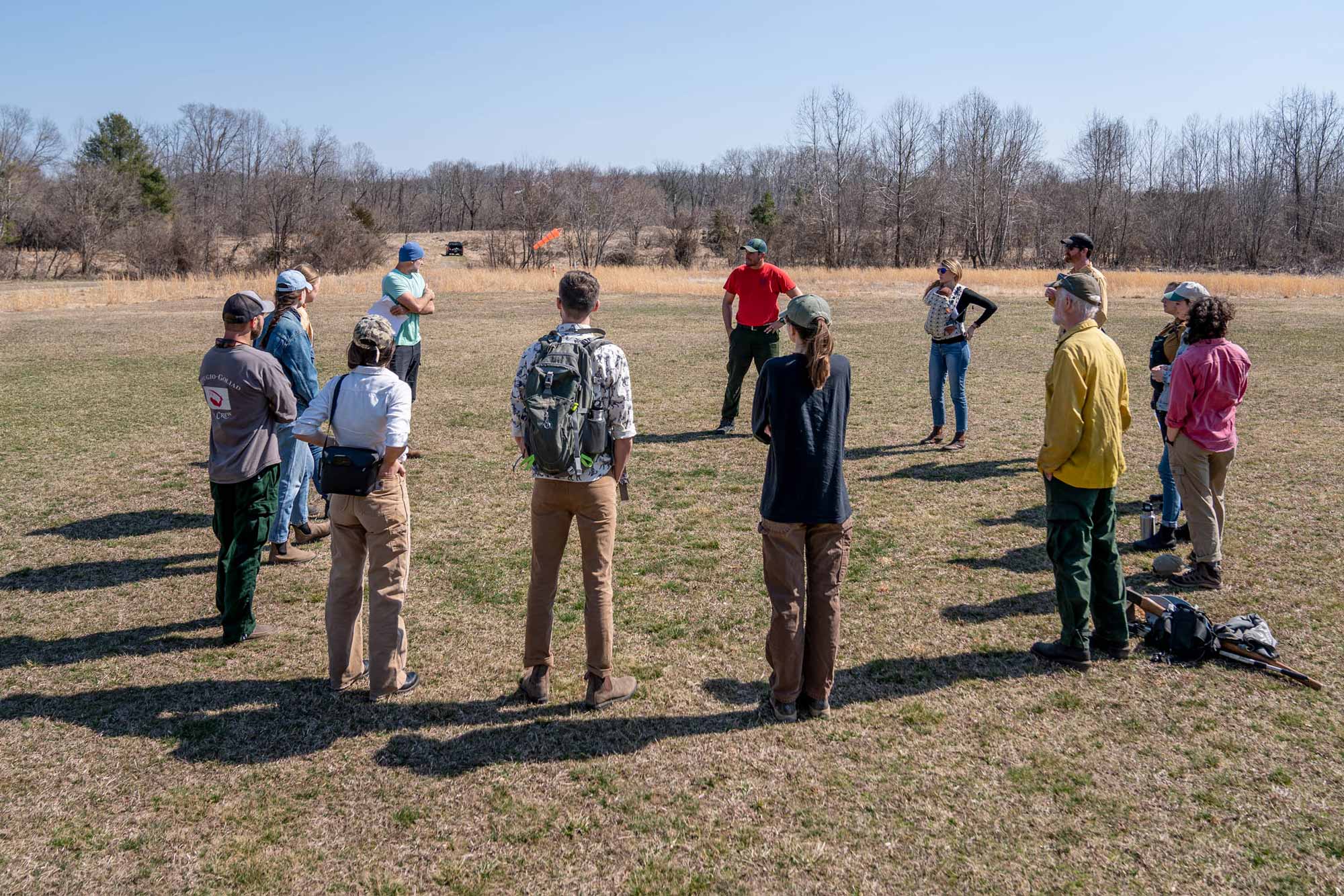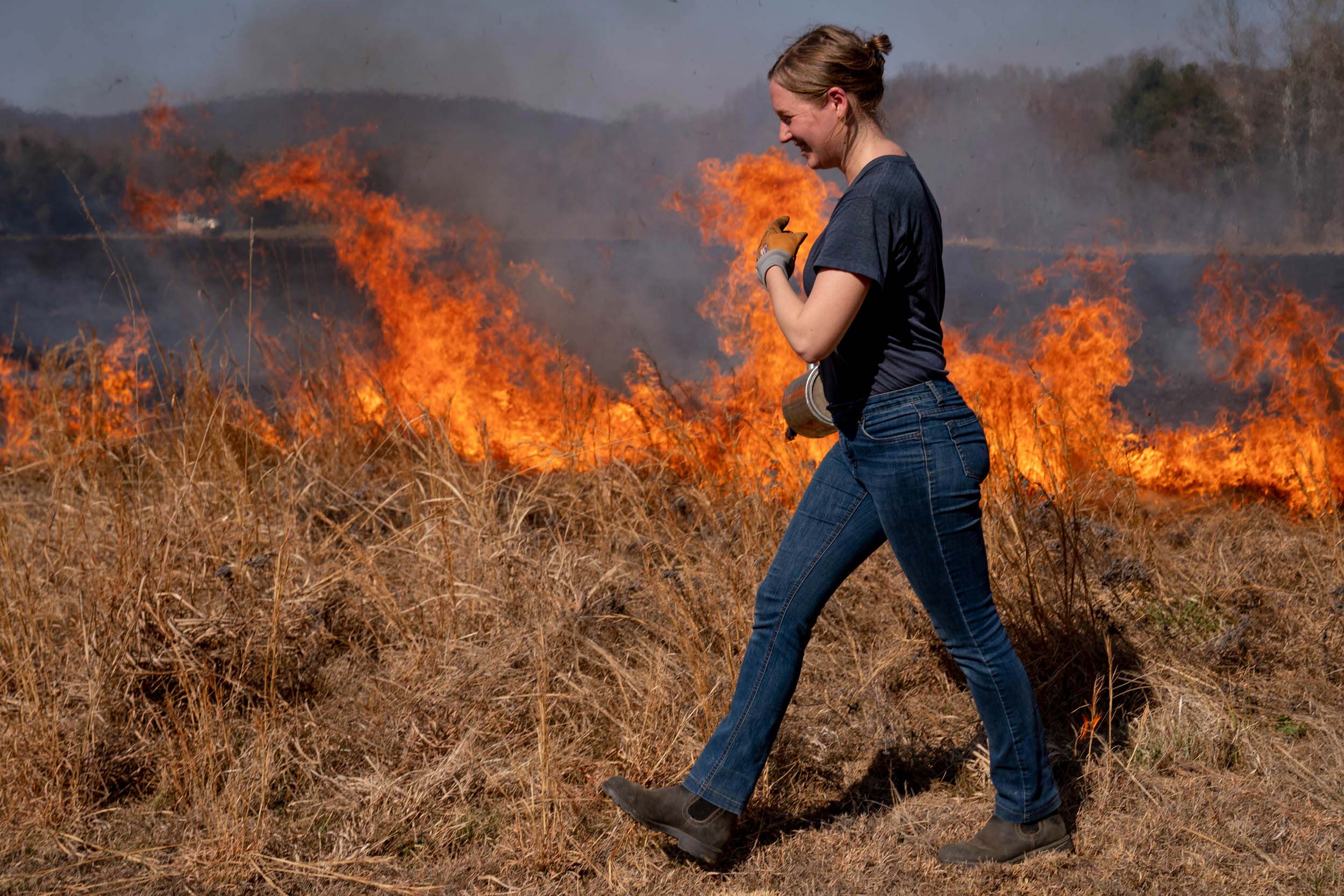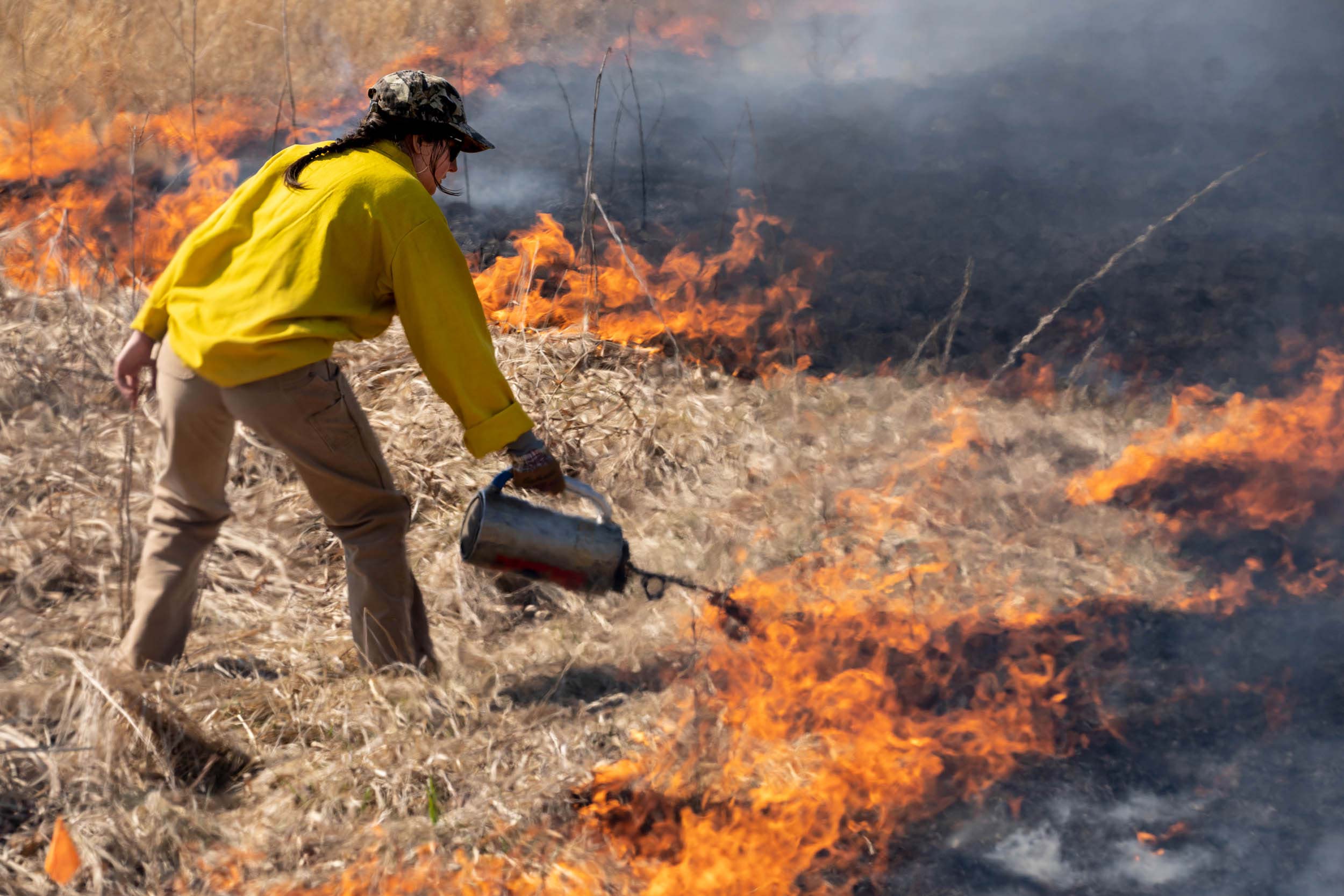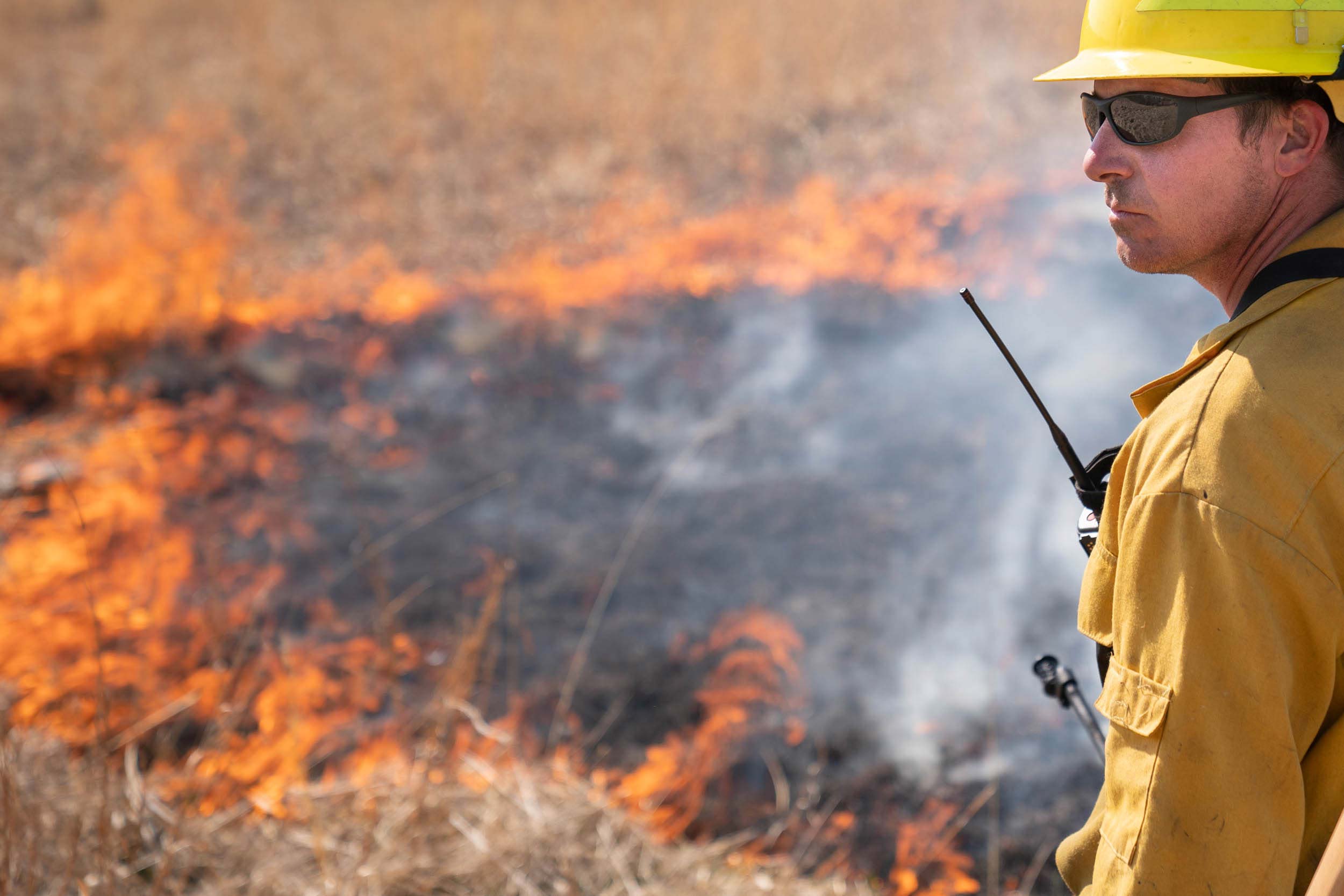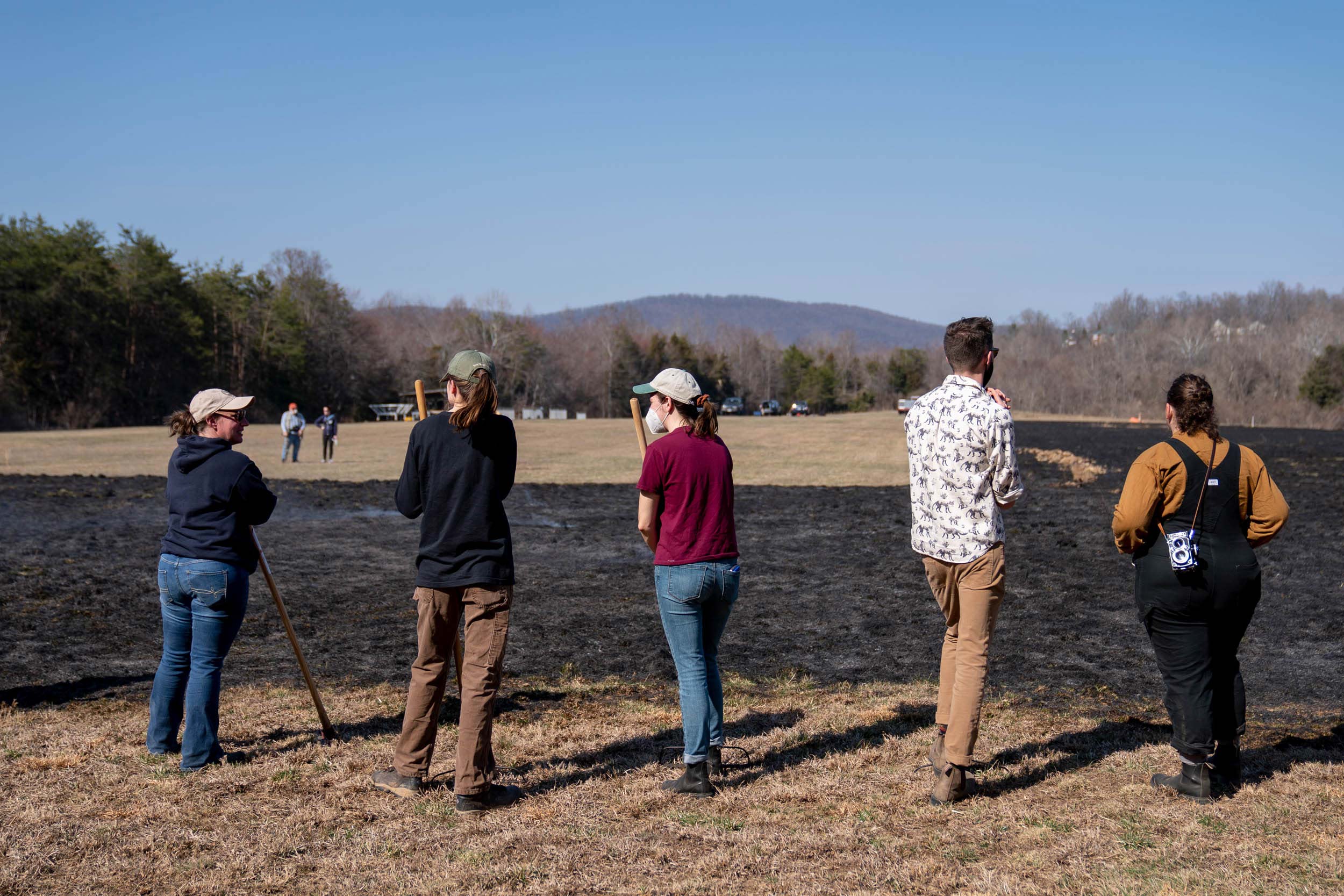The grouping of native plants found in this old remnant is a community that is not at all tolerant of plowing and other deep soil disturbances The grouping is also quite fire-dependent and tends to move very slowly about the landscape. It takes a long time to establish, and new research suggests the average age of old grassland remnants on many continents is more than 1,000 years.
“They tend to be groups of plants that have slow dispersal rates, and require specific conditions to germinate, grow and reproduce,” Floyd said. “The plants have a variety of strategies to spread. Some make tons of seeds and some are carried on the wind or moved around by birds or mammals. Others, like the mountain mints, spread mostly by gravity seed dispersal and the creeping roots that send up new growth, so it moves across the land real slowly. They require sun across great amounts of time to move across the land, and that condition – one free of dark forest – is perpetuated by surface disturbance regimes such as fire, both natural and human-ignited.
“We find these little patches spread out and separate from one another, where once they were contiguous across the land. For them to get from one place to another, say a couple of miles, might take hundreds of years, and during that time the path of movement must be a sunny one.
“When we find these plants that move slow and need this soil stability and sunlit environment, we begin to see a story emerging that is counter to what most of us learned when we were growing up,” Floyd said. “Ecologists now call it the ‘virgin forest myth’ – unbroken forests stretching from the Atlantic to the Mississippi. Thankfully, we have the records of dozens of early explorers and cartographers that help explain some of what we are seeing in the grassland research data. In fact, one may imagine the Piedmont region hosting an incredible diversity of ecological systems, from wetlands to barrens, and forests to prairies. It is a safe bet to assume that about half of the region would have been forests and the other half grasslands, including barrens, prairies, savannas and woodlands – a lot more diverse than the government-driven forest and anti-fire campaign led us all to believe beginning of the early 1900s.”
Floyd’s work is part of a larger movement that hopes to draw awareness to forgotten grasslands that still exist. The focus is on restoring natural systems, so that native plant and animal diversity may continue to persist.
“These burns are about systems, or what ecologists call ‘natural plant communities,’” Floyd said. “It’s important that we begin to influence the public with education that discourages an obsession with individual species and so-called ‘gardening’ and allows them to think about systems and restoration in the lived-in landscape; communities, not individuals. If the community is healthy, the individual plants and animals thrive. And the same can be said for all of the diverse organisms that call these grassland systems home.”
